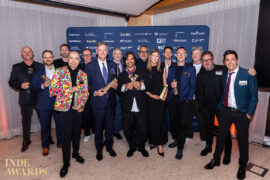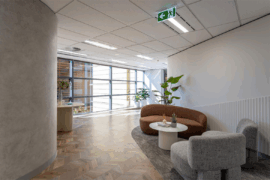The State of Australian Cities 2014-15 report card is in. According to Green Building Council of Australia (GBCA), we need stronger investment in our cities.

September 4th, 2015
Two distinct trends are highlighted in the report. Density is increasing in the inner cities and low density growth outwards is making commute times longer and urban fringe-dwellers increasingly distant from employment, education and health opportunities.
“Increasing density can deliver improved productivity and a great quality of life in Australia’s cities, but it is only through best practice planning and delivery we can ensure that liveability, affordability, productivity, sustainability and health outcomes will be positive,” says the GBCA’s Chief Operating Officer, Robin Mellon.
While it is important to highlight issues such as changing demographics and settlement patterns, the GBCA is concerned that the report does not mention the urgent need to make our cities more resilient to climate extremes, nor opportunities for reducing emissions or the impact of our cities.
“There is no single, simple solution for better, more sustainable cities, but there are a number of things we can do to ensure our cities remain the resilient, competitive engines of our economy, as well as places people want to – and can afford to – live,” Robin adds.
Australia’s cities generate more than 80 percent of our GDP and more than 7.6 million people are employed in Australia’s capital cities, yet the report shows that the labour productivity of Sydney and Melbourne falls below international averages and all of our other cities rank outside of the top 100 Asian-Pacific cities for Global Urban Competitiveness.
“We are pleased to see that this report has been made public at long last. Previous editions have been downloaded millions of times, demonstrating that Australians place a great deal of importance in measuring and reporting on the performance and progress of our cities.”
Green Building Council of Australia (GBCA)
gbca.org.au
INDESIGN is on instagram
Follow @indesignlive
A searchable and comprehensive guide for specifying leading products and their suppliers
Keep up to date with the latest and greatest from our industry BFF's!

CDK Stone’s Natasha Stengos takes us through its Alexandria Selection Centre, where stone choice becomes a sensory experience – from curated spaces, crafted details and a colour-organised selection floor.

For a closer look behind the creative process, watch this video interview with Sebastian Nash, where he explores the making of King Living’s textile range – from fibre choices to design intent.
Paul Townsin has won the Barrisol Lumiere Design Competition for his ‘Halo’ pendant light design.

Over 400 incredibly diverse projects, people, products and ideas from all over Asia Pacific were submitted for the 2018 INDE.Awards and our esteemed jury have made their selections. And here are the nominees…
The internet never sleeps! Here's the stuff you might have missed

With the opening of the 2026 INDE.Awards program, now is the time to assess your projects, ensure photography is at hand and begin your submissions.

A thoughtful, low-waste redesign by PMG Group in collaboration with Goodman has transformed a dated office into a calm, contemporary workspace featuring a coastal-inspired palette and Milliken flooring for a refined finish.